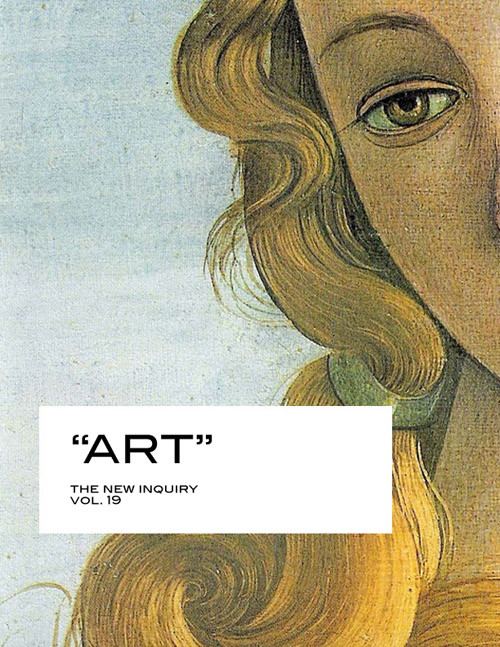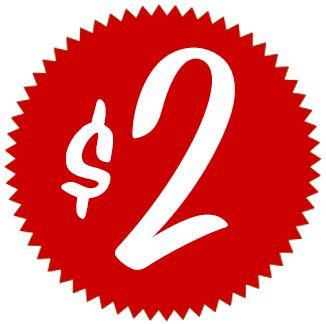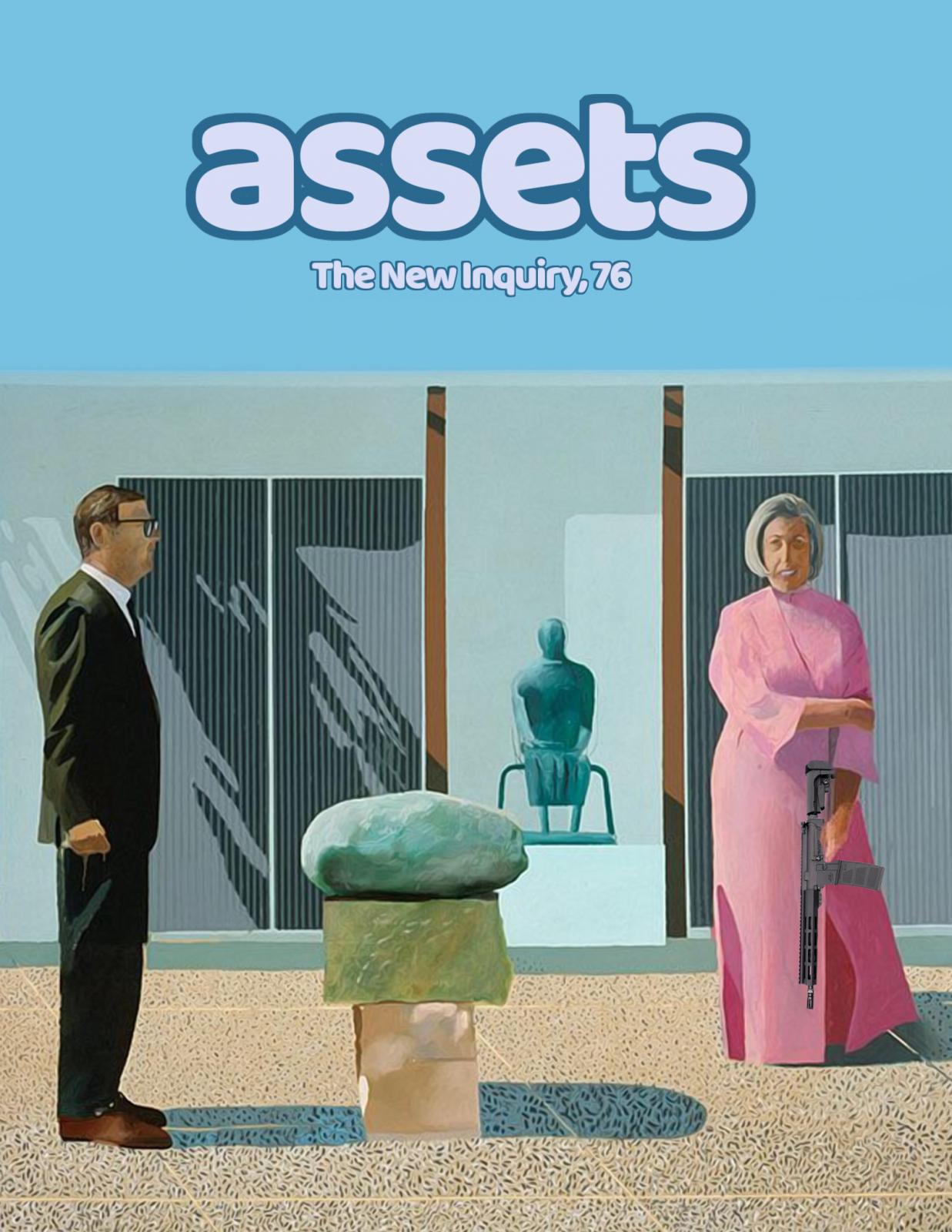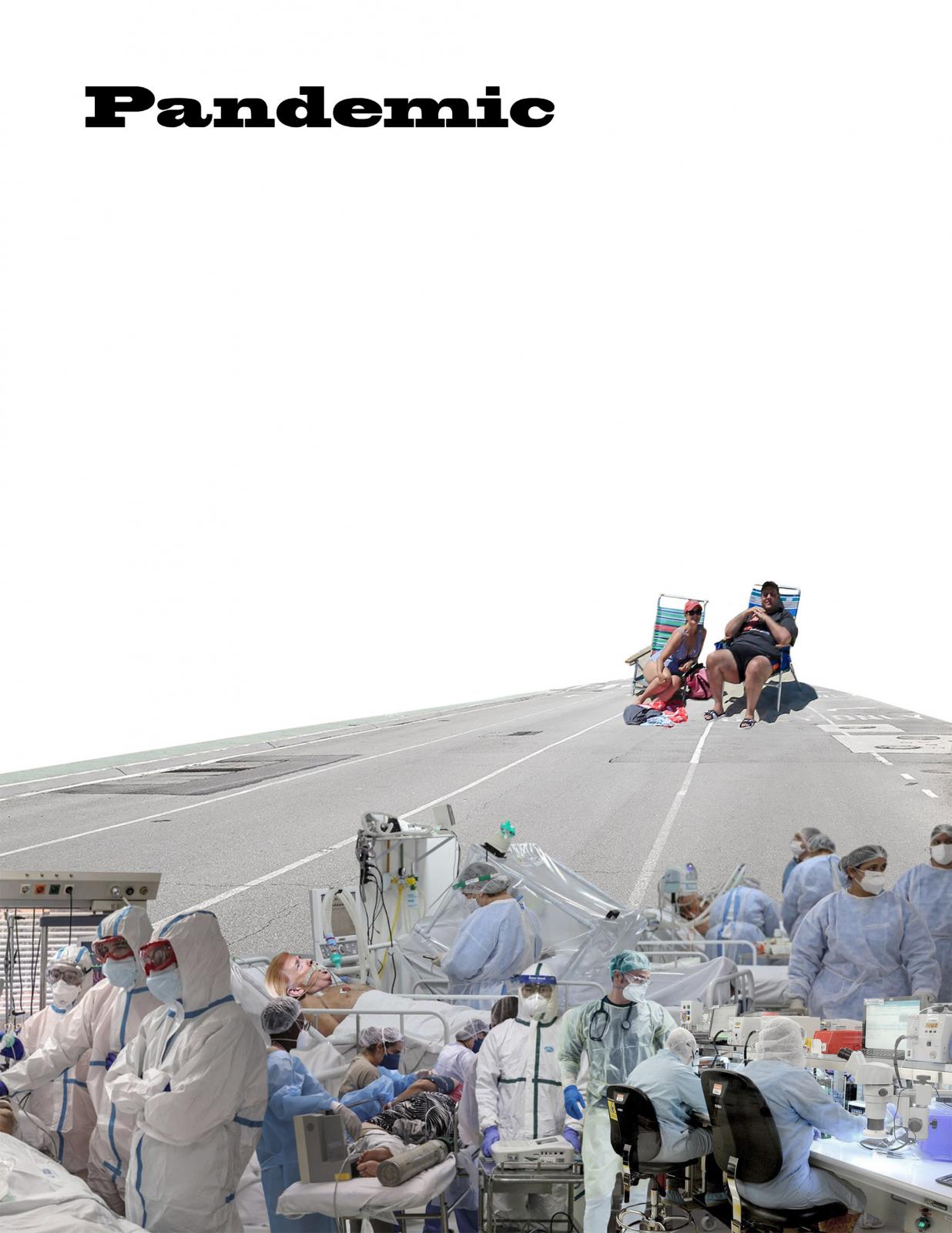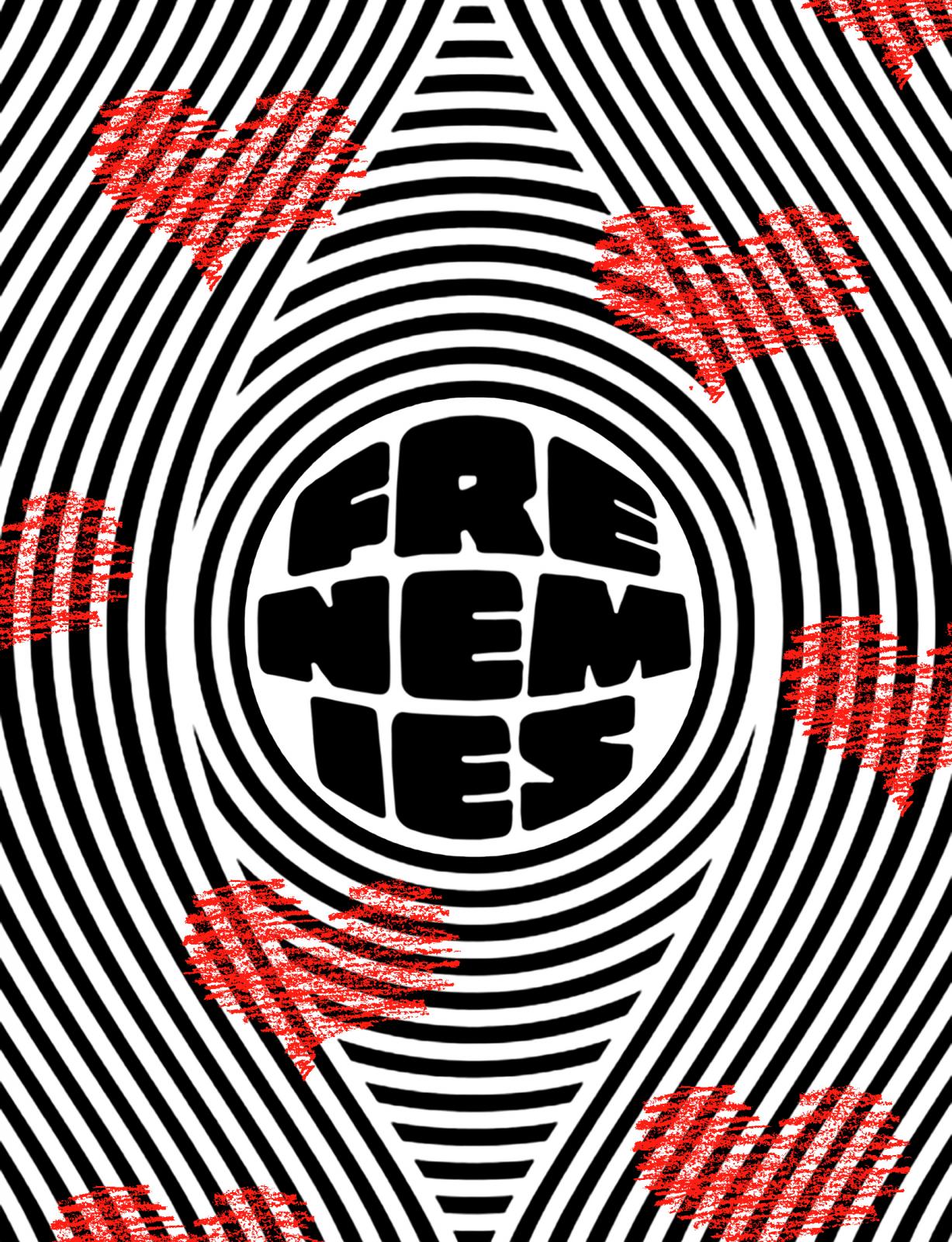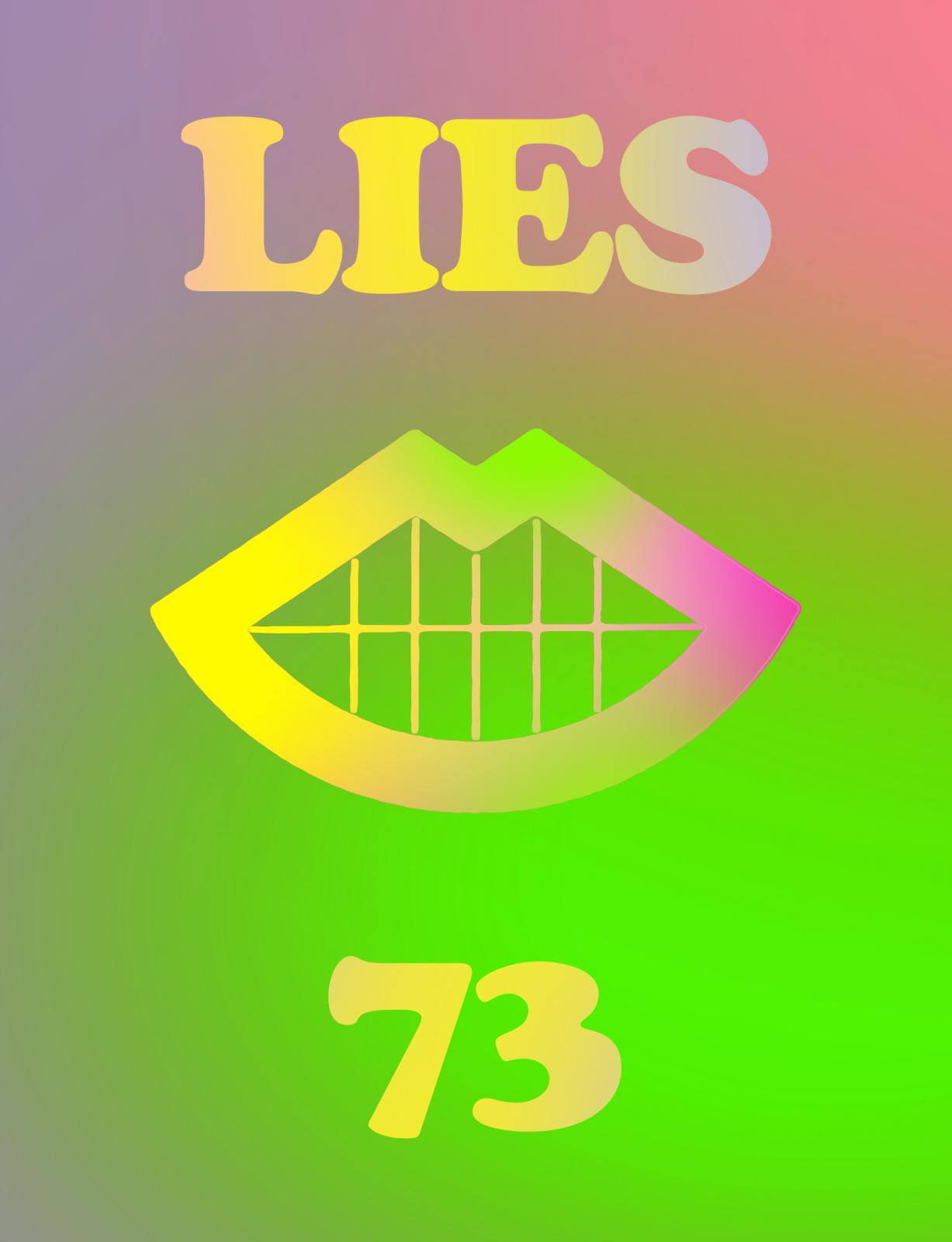"Art"
Editors' Note
Central to the project of contemporary art—the discourse about it and the market for it—is the question of what actually constitutes art this year, this week, in general. As such, it would be inappropriate to offer any kind of editorial consensus here, and indeed, the dialogue and dialectics generated by the asking and re-asking of this question account for most of this publication’s content and a good percentage of all texts and artworks being circulated in and around the [art] world at any given time. Next year there could be more.
In keeping with the liquid-modern, high-accelerationist turn that defines much contemporary thinking on the production and distribution of commodities, the art world’s metabolism just keeps on getting faster. The art market is the frontier of spectral, libidinal value creation, hungry and horny, as Nick Faust has it in a juicy romp through the prophylactic discourses of art history right up into a chubby, fruit-smelling, late-capitalist NOW where everything is “harsh, ethereal, fuzzy, stark, amplified, severe, ringing.” A fertile slippage occurs when the spheres of knowledge and the spheres of expression begin to merge, as with the work of Nelly Ben Hayoun, (here interviewed by Deena Chalabi), whose project International Space Orchestra has several generations of NASA scientists performing and recording a high-modern absurdist opera in the SETI Institute. What happens to the recordings? Beamed into space, of course.
Abrams claims that “the digital photographic image can be understood as the homogenizing, ubiquitous medium of our era.” Further, by having access to audiences and networks online, artists can represent and promote themselves, relying less on “market-driven galleries and institutions that restrict artists’ freedom to produce prolifically and radically.” Certainly this prolific radicality is also hailed by Troemel as the new power modus for millennial artists and culture makers in a world in which the veracity and velocity of the stream leave little room for particularity or affect, and the quantity, rather than quality, of an artist’s work equates with the power and presence of that artistic project. The extraordinary labor of maintaining a near constant stream of content rewards itself, since “even less successful posts will serve to strengthen the bond between artist and audience, giving each a chance to reinforce the existence of the other—‘I’m still here!’ they say in unison.”
Rob Horning deals with the problem of the artist as a good claims to creativity in a review of Ben Davis’s 9.5 Thesis on Art and Class. “Part of the problem with artists as cultural role models,” writes Horning, “is that they authorize a general devaluing of labor by making it seem as though ‘creativity’ is its own reward.” Pitting yellowism against officially-sanctioned protest art in “U.S.Ai,” Malcolm Harris describes the myopic, short-circuited logic at work in the art world: “You can put an iPad in a blender, but you can’t just take one off a store shelf to do it. You can break a Han Dynasty urn, but not a framed picture of someone else breaking a Han Dynasty urn.” Art, writes Harris, is a reminder of what is and isn’t allowed.
Since nothing means anything anymore and art only serves to co-opt or further hegemonic capitalist interests, it would be easy to forget that art was ever subversive. Yet Teju Cole and Maryam Monalisa Gharavi, writing respectively on the phenomenon of iconoclasm and “Giants of Boston”—a mural variously interpreted as “an Al Qaeda operative, Bart Simpson disguised as a mujahideen fighter, the wife of a terrorist, a ‘towel head Islamist holding a gun,’ an ‘allah [sic] loving united states hating individual,’ a ‘gay ninja,’ a Taliban fighter, a ‘tribute to [President Barack] Obama’s birthday,’ and in ‘seriously poor taste’ ”—point to the latent power of images, and a whisper of what that power might speak. Taken out of context, Cole’s embedded icons are no more or less tumblrable than the next Jogging post or space macro, but it’s not always easy to disentangle graven images from flesh and blood. Despite all speculation and evidence to the contrary, art is real.
Featuring
-
Vol. 19 Editors' Note: "Art"
-
Eine Kleine SpaceMusik
-
U.S.Ai.
-
Athletic Aesthetics
-
Flatland
-
Get Off
-
Giants of Boston
-
Creative Tyranny
-
Leaving on a Jet Plane
-
Unsolicited Advice for Living in the End Times, Vol. 19
